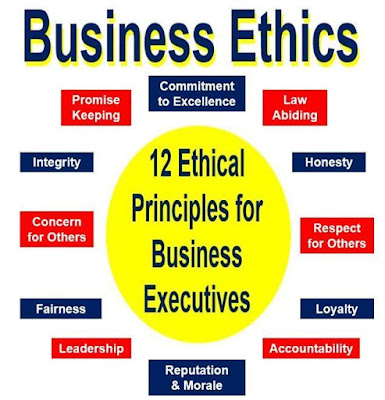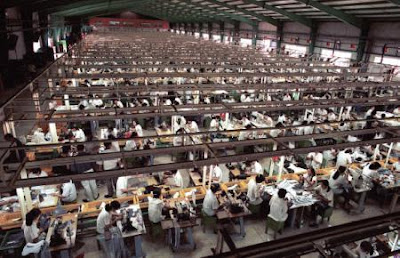Management,
teamwork and collaboration are consistently linked to increases in innovation.
Companies with a reputation for strong employee engagement and creating a happy
workplace generate good publicity and cachet for their Chief Executives. But
these companies are finding that what makes a great employer can also lead to
business success.
In fact,
the link between employee attitudes and business performance has been known for
decades. While some have argued that successful companies make employees happy,
not the other way round, academic studies have steadily discredited this view.
One of the most comprehensive studies on the topic is Gallup’s 2012 research of
192 organisations in 49 industries and 34 countries, covering 50,000 business
units and 1.4m employees. It found that business divisions scoring in the top
half of reported employee engagement had nearly double the performance outcomes
compared with those in the bottom half. The authors concluded: ‘Financial
performance is best viewed as a downstream outcome … Employees with positive
attitudes toward their workplace are likely to carry those attitudes over to
customers and to engage in the discretionary effort it takes to serve … at a
high level.’
Yves
Morieux, director for the Boston Consulting Group’s Institute for Organization,
believes the debate is now over. ‘Happy employees create high-performing
organisations … because there are more opportunities to satisfy their
aspirations, job security, chance of promotion, career development [and] wages,’
he says. ‘That is obvious … if the company is very productive but does not
maintain satisfaction at work then in a few years performance will drop.’
But many
employers have yet to cotton on. Employee engagement and happiness at work is
in decline. Separate studies by the Conference Board, Gallup and Quantum
Workplace found that employee engagement has been falling for the past decade
or more. Mr Morieux attributes this to a ‘proliferation of cumbersome
processes, systems, scorecards, metrics, meetings – what I call
“complicatedness”. People spend between 40 per cent and 60 per cent of their
time wasting their time, working on less and less value-added activity.’
By
contrast, best practice employers are ‘turning the engagement process into a
lot more than an annual event,’ says Jim Harter, Gallup’s Chief Scientist for
workplace management and wellbeing. ‘They embed it in how people think about
their day-to-day work … education and training, development that focuses on the
natural talents and strengths in the team. Helping people feel like they are
the future of the organisation and helping them do what they do best.’
Teamwork
and collaboration are consistently linked to increases in innovation and
discretionary effort, shaping how some companies now think about reward
packages. ‘You must be very careful with reward and bonuses,’ says Mr Morieux,
‘because if the bonus is very significant then your goal becomes to earn the
bonus. And then you will do everything you can to earn the bonus, including
hiding, exaggerating and why not cheating? These strong incentives are
counterproductive if you want people to co-operate.’
Netflix,
the digital broadcaster, pays only salary and not bonuses. It allows staff to
choose their working hours. A seemingly dull set of 124 PowerPoint slides
outlining Netflix’s employment culture has become a surprise viral hit, now
viewed close to 14m times. Mr Morieux believes the Netflix model has become ‘an
archetype’. He adds: ‘The Netflix values include management that is about
‘context, not control’, creating the right environment that inspires people,
that provides direction and transparency – as opposed to top-down decision
making, approvals processes and committees.’
Lego,
the Danish toy manufacturer, also credits employee empowerment as central to
its success. The Lego Group Chief Executive, Jörgen Vig Knudstorp, is widely
quoted as saying ‘Blame is not for failure, it is for failing to help or to ask
for help’. Mr Morieux says: ‘When you use this principle it changes everything
because suddenly it becomes in people’s interest to be as transparent as
possible about their real weaknesses, their real forecast, as opposed to hiding
or protecting themselves … The way [Lego] describe it is, “don’t think less of
yourself, but think of yourself less”. This is precisely to promote
co-operation.’
Lego,
along with the likes of Google and WL Gore, a US manufacturing company, has a
flat management structure. Layers of management are effectively stripped out,
leaving only the employees, a cadre of team leaders and the executive team. WL
Gore’s 10,000-plus employees are divided into self-managing teams of eight to
12 people who set their own work and pay. Staff also elect the company’s Chief
Executive.
What
does this say, then, for the future of managers? Yves Duhaldeborde, director of
organisational surveys and insights at consultants Towers Watson, argues that
managers – the ones that are left, at least – actually become even more
important in flatter structures. ‘What people need from managers is not someone
they get permission from, but the person who coaches and gives meaningful
feedback,’ he says. ‘Good people management is key to having happy people in an
organisation.’ The best managers build ‘a sense of trust and autonomy’ in
teams, adds Mr Harter of Gallup. ‘Getting that right leads to higher
performance.’
Source: Adapted from: Happy workplaces are the
building blocks of success, The Financial Times, 27 February 2016, p. 3
(Smedley, T).




Nhận xét
Đăng nhận xét